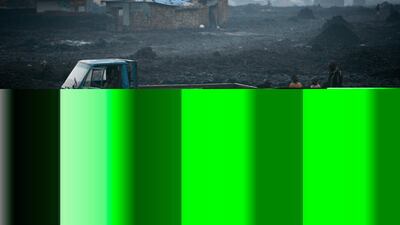The Democratic Republic of Congo (DRC) is both vast and mineral rich.
These two factors do not combine well and it is one of the most difficult places on earth for mines to operate.
Most of them set up in the eastern province of Katanga, the same region that was at the heart of a bloody civil war in the early 1960s when it tried to break away from the newly decolonised DRC.
Under its soil lies some of the largest, purest deposits of copper and cobalt, which now make up almost 90 per cent of the DRC's exports.
DRC continued to be the world’s leading source of mined cobalt, supplying more than one-half of world cobalt mine production, according to the US Geological Survey (USGS), Mineral Commodity Summaries, January 2017. With the exception of production in Morocco and artisanally mined cobalt in DRC, most cobalt is mined as a byproduct of copper or nickel.
In 2016, global cobalt mine production decreased, mainly owing to lower production from nickel operations. Growth in world refined cobalt supply was forecast to increase at a lower rate than that of world cobalt consumption, which was driven mainly by strong growth in the rechargeable battery and aerospace industries.
As a result, the global cobalt market was expected to shift from surplus to deficit. China was the world’s leading producer of refined cobalt and the leading supplier of cobalt imports to the United States. Much of China’s production was from ore and partially refined cobalt imported from Congo (Kinshasa); scrap and stocks of cobalt materials also contributed to China’s supply, USGS says.
In 2015 and 2016, China’s state reserve sureau purchased cobalt for its stockpile. China was the world’s leading consumer of cobalt, with nearly 80 per cent of its consumption being used by the rechargeable battery industry, the report says.
Because of the lack of infrastructure, mines have to build everything from their own power plants to airfields. For instance, Randgold Resources has built four hydrodams to supply its Kibali gold mine.
_____________
Read more:
Masdar scientists seek alternatives to rare earth metals
To infinity and beyond: quest for resources enters its space age
_____________
All this adds to capital costs. The Luxembourg based Eurasian Resource Group now building a cobalt and copper mine in the DRC, will burn almost US$1 billion in capital before the project is ready to begin extraction.
It is also difficult for companies to avoid getting sucked into political conflicts there, which spring up readily. The Toronto-based Banro had to suspend work at its Namoya gold mine after a local ethnic militia cut off roads during a dispute with the DRC military.
Tensions are also high over the repeated delaying of elections that should have been held in 2016. The president Joseph Kabila is ineligible for re-election under the DRC's laws, having already served two terms. Opponents say Mr Kabila is deliberately stalling to prolong his time in power to enable family and supporters to continue looting the treasury.
According to Global Witness, $1.3bn - twice what the DRC spends on health and education yearly - disappeared between 2013 and 2015 alone.
The DRC also has vast hydro-electricity potential. The Congo River could generate twice as much electricity as China's Three Gorges Dam - enough to double Africa's entire electricity supply currently.
South Africa is considering sponsoring the project to build the necessary dams, but the daunting task of protecting the facilities and transmission lines from potential rebel attacks are among the reasons nothing has come of this so far.
Despite these deterrents, the DRC continues to attract mining companies because it is one of the last places on earth where large untapped reserves of cobalt, copper, gold and nickel are found.

